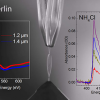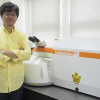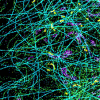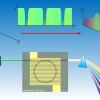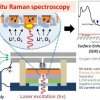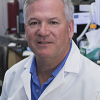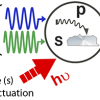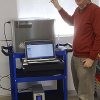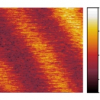Spectroscopy News
A major advance in solution-phase soft X-ray spectroscopy has been achieved utilising a new liquid flatjet system, paving the way for novel steady-state and time-resolved experiments.
Raman microscopy is being used alongside high-resolution X-ray diffraction to unpick the reasons for crystallographic defects in SiC bulk crystal and epitaxial film, which limit the commercialisation of SiC devices.
A partnership between the Institut de recherches cliniques de Montréal and Nuclea Biotechnologies has been formed to use quantitative mass spectrometry-based assays for insulin, proinsulin and c-peptide to determine risk and progression of type 2 diabetes.
In initial tests, a novel near infrared spectroscopy device assesses shock severity as accurately as a standard blood sample, without a single needle prick.
Researchers at the University of Birmingham, UK, have published results that suggest a non-invasive breath test for liver disease using a proton transfer reaction mass spectrometer.
Renishaw’s Spectroscopy Products Division (SPD) has moved to the new Renishaw Innovation Centre located at the company’s New Mills headquarters in Wotton-under-Edge, Gloucestershire, UK. This is a brand new building providing an additional 153,000 ft2 of space for Renishaw adjacent to the company’s iconic HQ, which is a converted 19th century woollen mill. The RIC was opened on 7 July 2015 by HRH The Princess Royal. SPDs new facilities also encompass a second, fully refurbished building, to house the Division’s production and supply chain teams.
Combining fluorescence spectroscopy and “stochastic optical reconstruction microscopy” enables the imaging of single molecules with unprecedented spectral and spatial resolution, thus leading to the first “true-colour” super-resolution microscope.
Ocean Optics has increased support for its EMEA (Europe, Middle East, Africa) business with the appointment of Zimon Norlin to the position of EMEA Service and Operations Manager. Norlin will be charged with growing regional access to Ocean Optics’ spectroscopy products and applications knowledge.
Unique “graffiti” on the walls of a cave in central China describes the effects drought had on the local population over the past 500 years. Stable isotope and elemental analysis of stalactites have been able to confirm the climate variations.
VTT Technical Research Centre of Finland has developed a miniature gas sensor that can be connected to mobile devices. Gas measurements made with smartphones will make activities such as the detection of internal air problems easier. In addition, sleep quality will be measurable with greater precision, using mobile healthcare applications which gauge carbon dioxide quantities.
Researchers have solved a key obstacle in creating the underlying technology for miniature optical sensors to detect chemicals and biological compounds, high-precision spectroscopy, ultra-stable microwave sources, and optical communications systems that transmit greater volumes of information with better quality.
Raman spectroscopy helps lithium-air batteries live up to their promise: we could one day be driving electric cars 500 miles or more without recharging, or using laptops for weeks without having to plug in. They could also replace lithium-ion batteries, currently the standard in many consumer electronics.
An international collaboration including scientists from the Florida campus of The Scripps Research Institute (TSRI) has used hydrogen–deuterium exchange mass spectrometry to determine the structure of a plant hormone that plays a crucial role in regulating plants’ responses to insects and disease-causing microorganisms as well as normal growth and development.
A microscope being developed at the US Department of Energy’s Oak Ridge National Laboratory will allow scientists studying biological and synthetic materials to simultaneously observe chemical and physical properties on and beneath the surface.
Magritek’s Spinsolve Benchtop NMR spectrometer is being used in the Chemistry Department of the University of Queensland as part of the undergraduate laboratory curricula.
Daylight Solutions, Inc., has received two new awards for their Spero™ microscope. Spero was awarded the 6th Annual Microscopy Today Innovation Award and was also named a finalist in the 2015 R&D 100 Awards taking place later this year.
A new microscope based on ultrafast pump–probe spectroscopy and scanning near-field optical microscopy offers the potential for studying dyanmic processes on the nm scale.
Congratulations to Peter Derrick on being awarded the Australian and New Zealand Society for Mass Spectrometry (ANZSMS) Medal; the Society’s highest award.
Keynote speakers for NIR-2015 are announced, including the Tomas Hirschfeld and Karl Norris Award Lectures.
Dietary supplements may can contain a number of unexpected substances, including the active ingredient in Viagra, as detected by a LC-MS technique.

